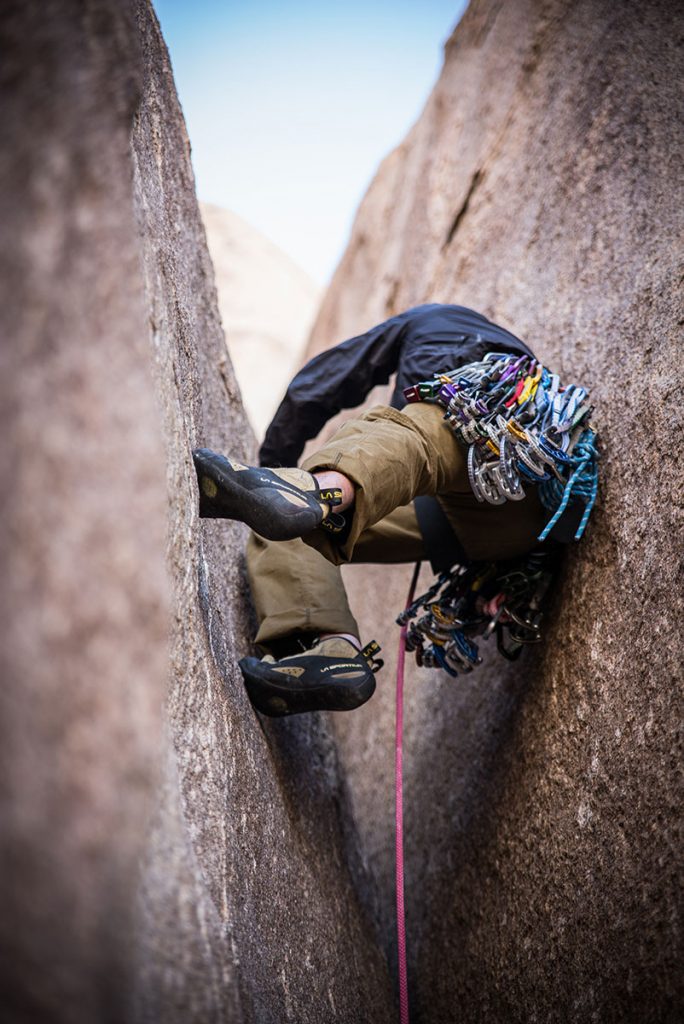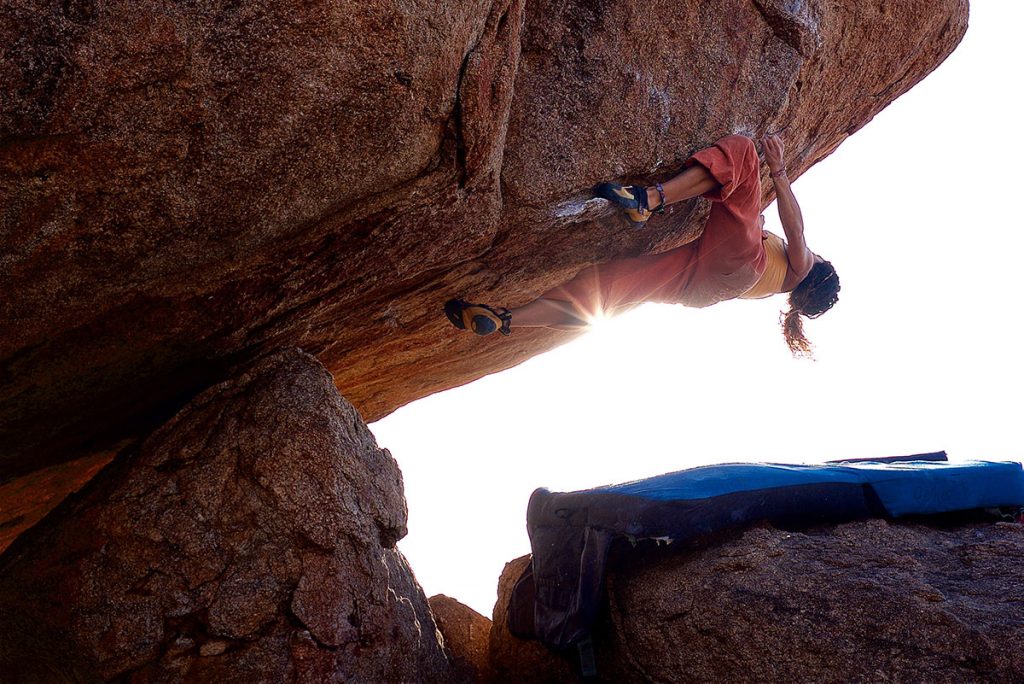Climbing Foot Injuries – They’re More Common than You Might Think
When it comes to common climbing injuries, climbers suffer primarily from upper extremity injuries. In a study published in the US National Library of Medicine at the NIH, 90% of the 357 participants who climbed regularly reported sustaining an upper extremity injury. Per the study:
“Fingers (41%) were the most commonly injured, followed by the shoulder/arm (20%) and the elbow/forearm (19%). The most commonly reported injuries were abrasion/bruises (66%), followed by lacerations (57%) and tendon injuries (56%). Of those reporting a tendon injury, 86% were reported as a flexor tendon or pulley injury of the hand.”
According to the study above and other climbing injury research, the three most common climbing finger injuries are collateral ligament strains, flexor tendon tears and A2 pulley injuries.
With those kinds of statistics, it’s no mystery why climbing foot injuries are often overlooked in the climbing world. There are, however, common acute and chronic foot injuries climbers encounter – many of which are not represented in the limited number of studies on lower-extremity climbing injuries.
Chronic Climbing Foot Injuries and Conditions
The use of extremely tight climbing shoes causes a whole host of conditions. The fit of climbing shoes not only changes the biomechanics of the foot, but it also increases the load and stress applied to the fore-foot. In addition to bunions, corns, calluses, toe rot, subungual hematoma and pitted keratosis, overly tight climbing shoes can cause a number of chronic toe and foot issues.
Hallux Rigidus
A form of osteoarthritis, hallux rigidus is a progressive condition that affects where the big toe connects to the foot. Advance stages make walking difficult and painful – and serious cases may require surgical intervention to shave the bone, fuse the joint or insert an implant for support.
Hammertoe
Hammertoe is a foot deformity that creates an abnormal bend in the middle joint of the (typically) second, third and fourth toes. Hammertoe is caused by an imbalance in the ligaments, tendons and muscles that keep the toes straight and stabilize the foot.
Sesamoiditis
While most bones in the body are connected by joints, sesamoids are attached to tendons or embedded in muscle. There are two sesamoids in the underside of the foot, near the big toe, that act like pulleys, assist in bearing weight and help elevate the bones in the big toe. A form of tendinitis, sesamoiditis is when these two tiny bones are inflamed.
Acute Injuries
While there are a number of chronic foot conditions climbers suffer from regularly, the risk of acute lower-extremity injuries is nearly as common as acute upper-extremity injuries. As noted in the NIH study above:
“While injuries of the upper extremity are widely discussed in rock climbers, reports about the lower extremity are rare. Nevertheless, almost 50 percent of acute injuries involve the leg and feet.”
The following acute injuries are typically caused by ground falls, rock hit trauma during a fall or getting zippered in while belaying.
Foot Sprains
Thankfully, foot sprains are incredibly rare for climbers (one benefit of tight climbing shoes). While they’re technically not a foot injury, ankle sprains are the most common lower extremity injury and are all too common among climbers.
Contusions
Acute, painful and usually ugly, foot contusions (aka bruises) are typically caused by traumatic impact with rock during a fall. While not as serious as a fracture or even a sprain, contusions from climbing can be treated at home with RICE: rest, ice, compression and elevation.
Fractures
Fractures in the foot can range in scope and severity: tiny cracks to multiple fractures to complex fractures in which the bone(s) pierce your skin and are exposed. In climbing, foot fractures result from traumatic falls and impacts and may require surgery to repair.
So, you may want to think about more than just foot holds the next time you climb. While lower-extremity climbing injuries are largely overlooked, climbing foot injuries are more common than you might think.
If you have suffered an injury while climbing and have questions about what to do, please don’t hesitate to contact us. One of our orthopedic surgeons will be happy to answer any questions you may have.


5 Comments
Permalink
I have developed a shooting intermittent pain that seems to be between my big toe and second toe on both feet. Usually I notice it most when taking my shoes on and off. I haven’t been limited by it, but trying to stay aware of changes in my body. Thanks for your time!
Permalink
Hi David,
Unfortunately with this type of issue, it is difficult to offer you a solution without a doctor examination. If good supportive shoe gear isn’t helping, you will need to be seen by a podiatrist to evaluate for a possible stress fracture or other foot pathology. Dr. Jason Dickerson at our clinic would love to help you! Simply call our office and we’ll get you in for an exam as soon as possible. Our phone number is (435)615-8822. Best of luck with your recovery.
Permalink
Hi! I recently hurt my big toe while bouldering barefoot. I was on a foot hold that only fit my big toe, and I was pulling really hard on it in a bent position (kind of like crimping with my toe) and something snapped in my toe. Immediately after, it hurt to weight my big toe when bent, but not when straightened. 5 days later, it’s the same, pain is about the same level. I haven’t gotten it checked out yet, but I will if the pain doesn’t decrease in the next few days. I feel no pain when walking or running, only when I toe down hard (with or without climbing shoes). Does anyone have any ideas or any similar experiences to share?
Thanks!
Permalink
Hey Vivek,
The exact same thing happened to me as well. I’m curious as to what was your diagnosis as it probably would be the same for me. It’s been 3 weeks for me and still can use the muscle in the big toe to push down (for example I can’t start a sprint from that foot).
Permalink
Hi There, I have a stress fracture of the outside MTP sesamoid in my left foot. It has not healed since July 2021. I tried non-weight bearing for the first few months, then my podiatrist said it was hopeless and he should remove the bone, but I am hesitant. Right now, the broken sesamoid causes pain and swelling during climbing but I can do most other activities. I’m afraid that removing the sesamoid might make my climbing worse by reducing mobility of my big toe and not be worth the long recovery time. Do you know of any climbers who have been able to return to climbing after MTP sesamoidectomies? Or is it possible to figure out a way to climb with the broken bone? Below is the info from the CT scan. Thank you very much! Lauren
Bone islands are again noted in the distal first metatarsal. There is persistent lucency extending plantar to dorsal within the tibial sesamoid of the first metatarsal. No new bone
deposition is demonstrated. Cortication of the opposing margins is suggested.